


xxxxxThe German organist and composer Johann Sebastian Bach was one of the most productive and skilful musicians of all time. Apart from the Brandenburg Concertos, produced in 1721, he wrote concertos for keyboard, violin and oboe, four orchestral and six violin suites, many sonatas and six cello suites. To this must be added toccatas and fugues, choral music and songs, and keyboard music for the organ and harpsichord. He took up a number of appointments, and travelled widely in Germany, but he spent the last 27 years of his life in Leipzig. His music possessed great strength, rare beauty and a deep love and understanding of humanity, but an appreciation of his work was not reawakened until a performance of his Passion of St. Matthew was arranged by the German composer Felix Mendelssohn in 1829. He is known today for his Christmas and Easter Oratorios, and his Passions of St. John and St. Matthew but, in addition to his Brandenburg Concertos, his best loved works include the chorale Jesu, Joy of Man's Desiring, the secular cantata Where Sheep May Safely Graze, and Air on a G String, from his Suite No.3 in D major. During his career he gained wide fame as an organist virtuoso.
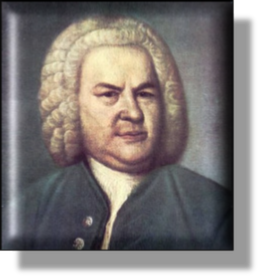 xxxxxJohann Sebastian Bach, the German organist and composer, was one of the most productive and skilful musicians in the history of western music. Apart from the six Brandenburg Concertos produced in 1721, he wrote other concertos for keyboard, violin and oboe, four orchestral and six violin suites, numerous sonatas for a variety of instruments, and six unaccompanied cello suites. In addition, he composed toccatas and fugues, fantasias, choral music and songs, as well as keyboard music for the organ and harpsichord. Nor was his high rate of production confined to music. From two marriages he had twenty children, though, sadly, five did not survive beyond infancy.
xxxxxJohann Sebastian Bach, the German organist and composer, was one of the most productive and skilful musicians in the history of western music. Apart from the six Brandenburg Concertos produced in 1721, he wrote other concertos for keyboard, violin and oboe, four orchestral and six violin suites, numerous sonatas for a variety of instruments, and six unaccompanied cello suites. In addition, he composed toccatas and fugues, fantasias, choral music and songs, as well as keyboard music for the organ and harpsichord. Nor was his high rate of production confined to music. From two marriages he had twenty children, though, sadly, five did not survive beyond infancy.
xxxxxHe was born at Eisenach, Thuringia, in central Germany, and was the member of a family whose musical talent stretched back for seven generations or more. He received his first musical instruction from his father, Johann Ambrosius, a town musician, and then went to live and study with his brother Johann Christoph, an organist at Ohrdruf. His musical career began in 1700, at the age of 15, when he became a chorister at Saint Michael's Church in Luneburg. Then,xafter a short spell at the court of Prince Johann Ernst of Weimar, he was appointed organist at the Neukirche in Arnstadt in 1703. It was while there that he was given a little time to study under the German organist and composer Dietrich Buxtehude (c1637-
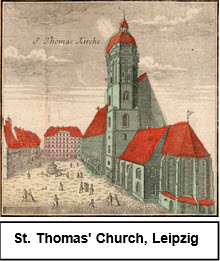
xxxxxIn 1707, after a brief spell as a church organist at Mulhausen -
xxxxxIn 1717 he was appointed chapel master and director of chamber music at the court of Prince Leopold of Anhalt-
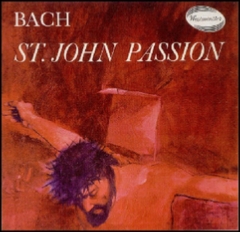
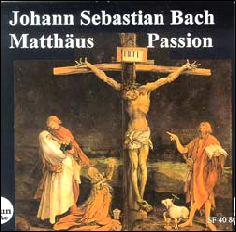 xxxxxHis long stay at Leipzig, where he was choirmaster and musical director of St. Thomas' church and its associated school, was not always a happy one, especially in the later years. He often complained that he was overworked and underpaid. Apart from other works, he was required to compose a new cantata every week! Furthermore, it would seem that his rare talent was not always appreciated, and his style became increasingly regarded as outmoded. The work of younger composers was seen as less florid, moving towards an elegant and classical simplicity. To this period, however, belong works which have since come to be recognised as masterpieces of his technical and artistic ability. These include his sacred music, such as his Christmas and Easter Oratorios of 1734 and 1736, his Passions of St. John and St. Matthew, and his monumental Mass in B Minor of 1749. His work for the keyboard contained his Italian Concerto, performed in 1735, and his Goldberg Variations, written in 1742. In 1747, after playing in front of Frederick the Great of Prussia, he wrote his Musical Offering, based on a theme submitted by the king himself.
xxxxxHis long stay at Leipzig, where he was choirmaster and musical director of St. Thomas' church and its associated school, was not always a happy one, especially in the later years. He often complained that he was overworked and underpaid. Apart from other works, he was required to compose a new cantata every week! Furthermore, it would seem that his rare talent was not always appreciated, and his style became increasingly regarded as outmoded. The work of younger composers was seen as less florid, moving towards an elegant and classical simplicity. To this period, however, belong works which have since come to be recognised as masterpieces of his technical and artistic ability. These include his sacred music, such as his Christmas and Easter Oratorios of 1734 and 1736, his Passions of St. John and St. Matthew, and his monumental Mass in B Minor of 1749. His work for the keyboard contained his Italian Concerto, performed in 1735, and his Goldberg Variations, written in 1742. In 1747, after playing in front of Frederick the Great of Prussia, he wrote his Musical Offering, based on a theme submitted by the king himself.
xxxxxTowards the end of his life Bach's eyesight began to fail, and it would seem that it was an unsuccessful operation to help restore it that was the cause of his death in 1750. For the next 80 years his music was generally neglected, only recognised for its worth by such discerning musicians as Wolfgang Amadeus Mozart and Ludwig van Beethoven. In fact, it was not until 1829, following a centenary performance of his Passion of St Matthew, arranged and conducted by the German composer Felix Mendelssohn, that interest in his work was re-
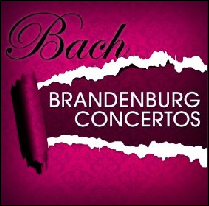
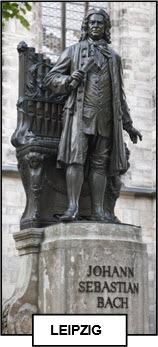 xxxxxMore than 1,000 of Bach's compositions have survived and, fortunately, they embrace a cross-
xxxxxMore than 1,000 of Bach's compositions have survived and, fortunately, they embrace a cross-
xxxxxIncidentally, when Dietrich Buxtehude, whose work had such an influence on Bach, was organist at Marienkirche in Lubeck, he instituted his annual Abendmusiken, a number of evening concerts held just before Christmas. The story goes that in 1705, at the age of 20, the young Bach, having been granted a month off, walked 320 kilometres (about 198 miles) to hear Buxtehude play in the concerts. He then over stayed his leave of absence, much to the annoyance of his church council at Arnstadt! ……
xxxxx...... One of his many cantatas, known as the Coffee Contata, celebrates the pleasure of drinking coffee, then becoming a fashionable pastime for those who could afford it. Cantata, from the Italian cantare (meaning “to sing”) was simply a composition for voices and instruments.
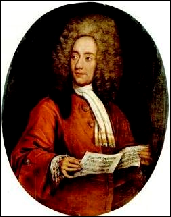
xxxxxBachxmuch admired the works of the contemporary Italian composer Tomaso Albinoni (1671-
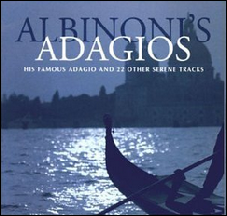
xxxxxInstrumentally, he contributed to the establishment and style of the concerto, and he was one of the first composers to use the oboe as a solo instrument, both in concertos and in his chamber music. His works -
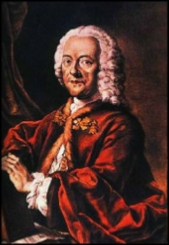
xxxxxAnd also worthy of mention here is the German composer and organist Georg Telemann (1681-
G1-
Acknowledgements
Bach: by the German painter Elias Gottlob Haussmann (1695-
JOHANN SEBASTIAN BACH 1685 -
Including:
Tomaso Albinoni
and Georg Telemann



